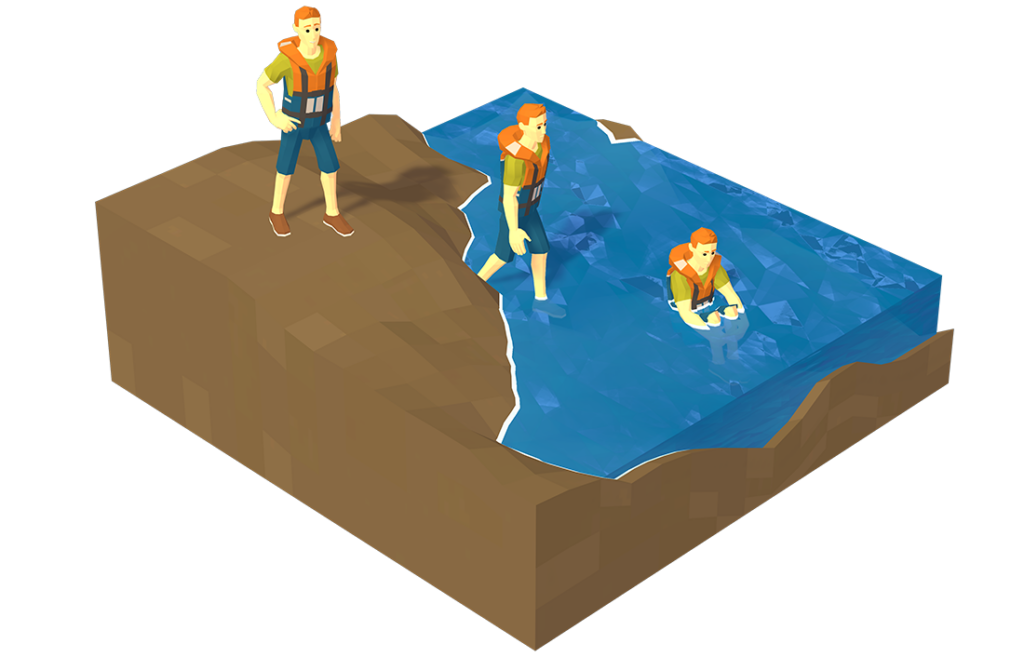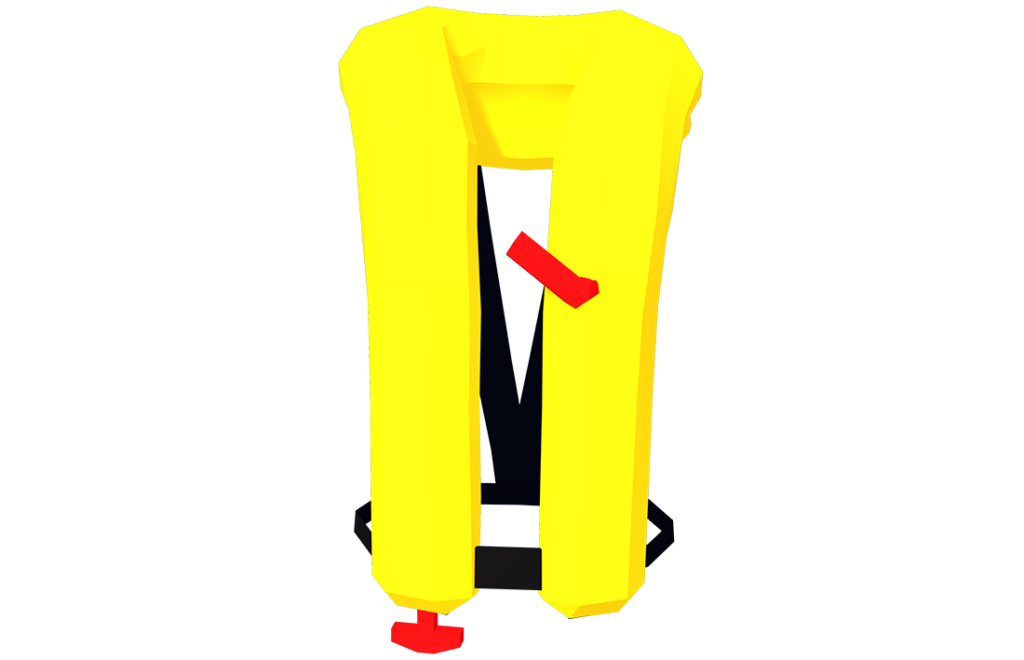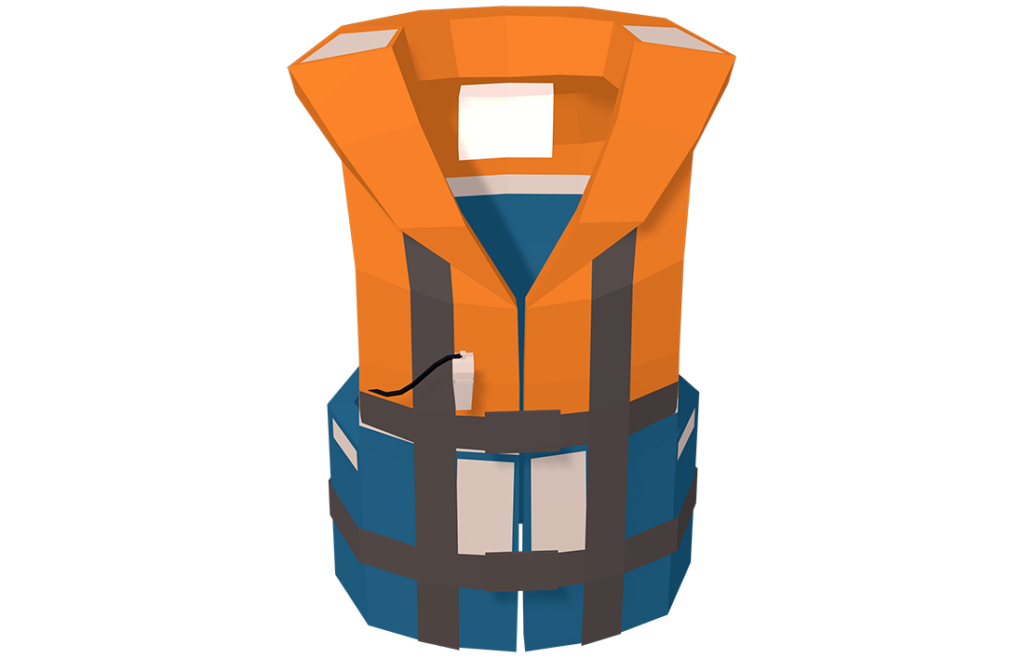Personal flotation devices (PFDs) and/or life jackets must be carried on all boats. There must be at least one approved PFD/life jacket for every person on board the boat. PFDs and life jackets must be of an approved type, which means they must bear a label or stamp of approval from the “Department of Transport, Canada, or the Department of Fisheries and Oceans/Canadian Coast Guard.” Care should be taken with life jackets and/or PFDs since the approved status becomes void if they have been repaired or altered. There are different kinds of life jackets/PFDs. The recommended models are the Standard Type life jacket, (keyhole) which is approved for all vessels (except SOLAS vessels), and the Small Vessel life jackets which are keyhole or vest type (pictures next page). All persons on board a boat should know about PFD/life jacket safety and the importance of wearing a PFD or life jacket at all times to prevent drowning. Anyone on board not wearing a PFD or life jacket should know where they are kept on the boat, and they should know the technique for putting them on both in the water and on the boat. The recommended procedure for putting on a PFD and/or life jacket when in the water is as follows:
- With the inside facing up and out of the water, spread the device
- Rotate the device until you are looking at the neck opening.
- Extend both arms through the arm openings.
- Lift your arms over your head and slide the device down your arms.
- Lean back and position the device around your upper body.
- Fasten the device to fit.
When selecting PFDs and/or life jackets you should look for a fit that allows both arms and legs to move freely. PFDs and/or life jackets should be appropriate for the type of waterway activities planned, and they should fit properly. Choose “adult sizing” for adults and “children sizing” for children, as per the label on the flotation device.
Life jackets should float an unconscious person face up in the water, and must be colored orange, red or yellow. Life jackets and PFDs should be tested frequently to ensure that they are adequate for all of your safety needs.
To test the reliability of a PFD or life jacket, put it on and carefully go into chest.deep water. When you are ready, bend your knees and float, making sure that the PFD or life jacket keeps your chin above water so that it is easy to breathe. All boaters and guests should test the flotation device to ensure they are familiar with the characteristics of the device and that it will keep a person afloat. These tests should be done on a regular basis as per the manufacturer’s instructions.
PFDs and/or lifejackets should not be used as cushions or boat fenders. This may damage them and void their “approved” status. When not in use they should be stored on the boat in a dry, well-ventilated and easily accessible area.
Inflatable PFDs are NOT approved for use by person’s under the age of 16 years, nor for persons weighing less than 36.3 kg. (80 lbs.), nor for white-water paddling activities. Inflatable PFDs are NOT approved for use on PWCs. Before use, read the manufacturers instructions for recommendations or restrictions in their use. Automatic inflating PFDs have a CO2 capsule to inflate then (you pull a chord), and manual inflation means you have to inflate them orally. Pouch type PFDs are worn around the waist like a tourist pouch. After inflating a pouch type, pull the horseshoe shaped inflated chamber over the head. Vest types are worn non-inflated already over the head.
It is now legal to have inflatable PFDs on board. In order for them to meet the life jacket requirement, they must be worn if you are in an open boat, or when on the deck or in the cockpit in a closed construction vessel.
Standard Life jacket
These are keyhole jackets that are reversible. They are available in orange, red or yellow and both adults’ and children’s sizes. These are an abandon ship jacket that will turn you face up. They are easy to put on, feature high buoyancy and turning ability but are bulky and uncomfortable.
Small Vessel Life jacket
These come in keyhole jackets or vest style. They are reversible, orange, red or yellow, and are universal sizes for adults and children. They are abandon ship jackets and are for use in sheltered waters. They turn most people face up. Easy to put on, they have reduced buoyancy and turning ability. They are bulky and uncomfortable.
To help maintain PFDs and life jackets, dry them in the open air, avoiding constant exposure to sunlight or direct heat sources. PFDs and life jackets should be cleaned with a mild soap or running water. They should not be dry-cleaned or cleaned with strong detergents or gasoline.
SOLAS Life jacket
Safety of Life at Sea (SOLAS) life jackets meet very high performance standards and are approved for all vessels.The SOLAS will turn you on your back in seconds to keep your face out of the water while unconscious.


